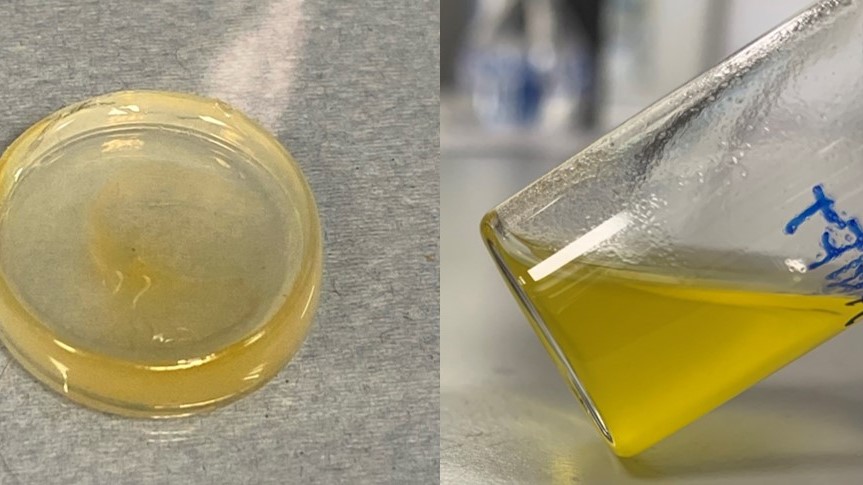From toothbrushes to car tyres, bottles and children's toys, the plastic problem is a well-known environmental issue. Millions of tonnes of plastic waste are discarded every year, and they don’t disappear over time. Instead, most break down into smaller and smaller pieces.
With the widely recognised need to develop more sustainable plastics, polymers that can be degraded on demand have become one of material chemistry’s most intensely investigated topics.
Polymeric materials - plastic, nylon, polyester and epoxy to name a few - can be divided into two main groups. Thermoplastics, which are made up of linear chains of polymers, and thermosets which are made up of crosslinked chains that form an infinite polymer network.
Understanding the polymer problem
Most thermoplastics can be melted down and reprocessed almost indefinitely, giving them a new life even if they’re not degradable.
Designing degradable or re-processable polymer networks, such as hydrogels or rubbers, however, is a more formidable challenge. Polymer networks that use commercial vinyl polymers, for example, polystyrene or polyacrylates, are even more challenging as they contain all-carbon backbones that are notoriously difficult to break.
Searching for a solution
Dr Maciek Kopeć, a researcher in the Department of Chemistry, and his team have recently discovered a way to incorporate carbon-sulphur bonds in the polymer backbone and use a newly synthesised chemical, dibenzo[c,e]oxepine-5(7H)-thione (DOT), as an additive comonomer. This has allowed them to develop fully degradable polymer networks, as the carbon-sulphur bonds can be much more easily split, breaking down the formerly indestructible networks.
The team joined forces with Dr Peter J. Roth at the University of Surrey, whose group first synthesised DOT in 2018. By swapping out more commonly used monomers with as little as 4 mol% of DOT during the creation of crosslinking polymers, researchers were able to make polymer gels that could be completely degraded with a simple nucleophile such as isopropylamine.
When put to the test, the team also discovered their new DOT-containing gels had virtually identical thermomechanical properties to their DOT-free counterparts, showing degradable polymers can be created without adverse effects on performance or stability.
In the next step, they plan to reform the degraded networks back into solid gels, retaining as many of their original properties as possible, resulting in a fully circular material.
Notably, the bulk of this work was realized as an undergraduate chemistry project by Harry Elliss, now a PhD student in the Department. He was awarded the Buchanan Prize for the best final-year project in organic chemistry for his contributions.


